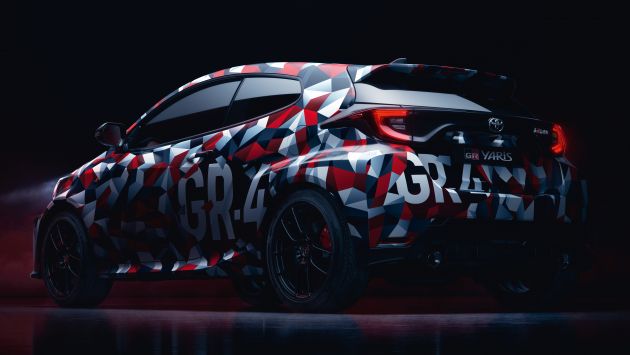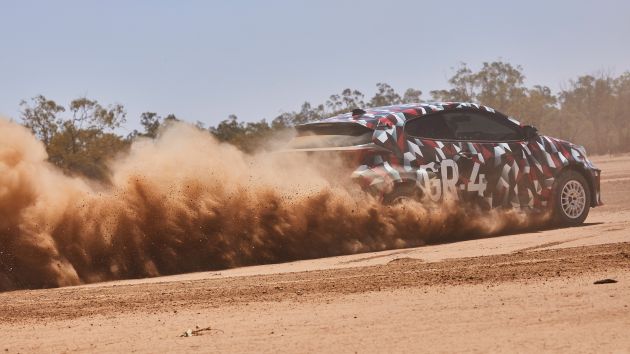Toyota may still be keeping mum with regards to details of its upcoming GR Yaris, but a recent first drive report from Autocar has shed some light on the hot hatch’s key specifications. Set to be revealed at the Tokyo Auto Salon next month, it will be quite a different beast from the Yaris GRMN that preceded it.
Whereas that car was simply a hotted-up version of the standard Yaris, this new model will be far more bespoke. First of all, it will have a different body – whereas the regular fourth-generation car is five-door only, the GR will be a three-door. It will also have a much lower roofline for better aerodynamics, which is important as the car will be used as a basis for Toyota’s World Rally Championship (WRC) contender in 2021.
Not only would a three-door body allow the car to carry more aerodynamic components, the chopped roof would also increase the distance between it and the rear wing (the height of which is dictated by regulations), improving the latter’s efficiency. According to the article, the roof has been lowered as much as possible whilst still maintaining road-legal levels of rearward visibility.
Despite this, the GR will sit on the same platform as the fourth-gen Yaris and share the same 2,560 mm wheelbase. However, the suspension will be completely revised, the rear end featuring double wishbones instead of the cooking model’s torsion beam, linked to passive dampers that save weight. The widened front and rear track is evident on the outside, where swollen fenders hide the larger wheels and tyres.
The new rear suspension will ease the fitment of the now-confirmed all-wheel drive system, which dispenses with a heavy centre differential in favour of a high-performance coupling ahead of the rear axle. This performs the same job of apportioning torque to the front and rear axles, and the GR will feature three settings for this – Normal (60:40 front-to-rear), Sport (30:70) and Track (50:50).
The GR will also differ from the GRMN under the bonnet. Instead of the latter’s 1.8 litre supercharged four-cylinder engine, it will get a brand new 1.6 litre turbo three-pot, which again saves weight. According to lead engineer Naohiko Sato, the engine is the lightest and most powerful 1.6 litre mill in production (at least before the Mercedes-AMG One rolls around), with claimed outputs of more than 250 PS and 350 Nm of torque.
While this engine won’t be used in the WRC car, it’s been designed to allow it to be homologated for the more budget-friendly R5 rally category. It’s paired to a six-speed manual gearbox, which not only weighs less but also increases the fun factor. The brake discs measure 18 inches in diameter with four-piston callipers at the front, and 16 inches with two-piston stoppers at the rear.
Unlike the 86 and the Supra, which were designed in collaboration with Subaru and BMW respectively, the GR Yaris will be the first sporting Toyota product in around 20 years to be designed entirely in-house. It’s the second car from the carmaker’s Gazoo Racing division, developed with help from Toyota’s motorsport arm and Tommi Mäkinen Racing, the latter running the company’s WRC effort.
Sato said that the rally team had “many difficult requests”, particularly in aerodynamics, weight and strength. He then had to battle to gain approval from higher-ups of a company still focused on building high-volume, mass-market products. “When we asked for three doors, everyone disagreed, because it meant a new body,” he says. “We had to fight for it, but we finally got it.”
Sounds like quite a recipe. Who here wants to see the GR Yaris join the Supra in Malaysia?
Source: Read Full Article


